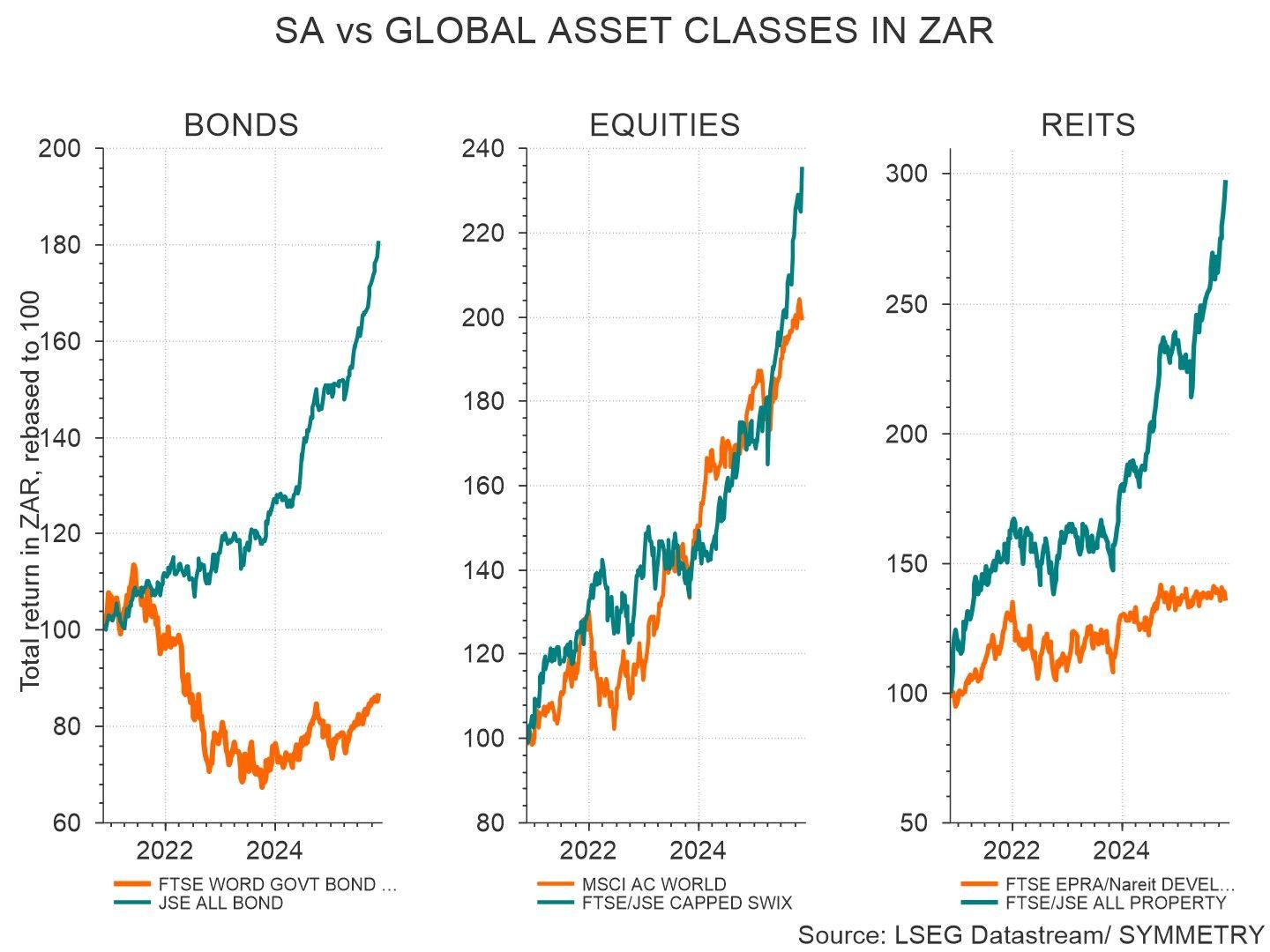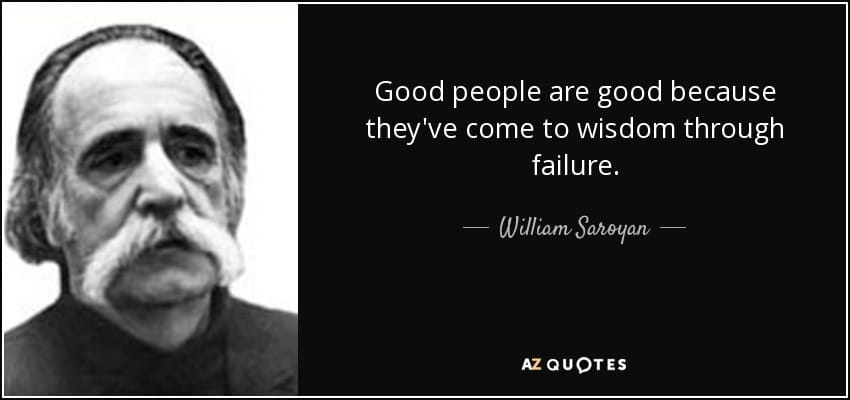- From the Desk of Jurie de Kock
- Posts
- Insights from Izak and Jaco, and the R1million Local vs Offshore Challenge after year 4
Insights from Izak and Jaco, and the R1million Local vs Offshore Challenge after year 4
Insights from Izak
Izak Odendaal, our Chief Investment Strategist, shared an insight this week on the strong local performance of late.
In the graphs below, he compares local vs offshore Bonds, Equities (shares) and Reits (Listed Property);

*Equities = shares
** REITS = listed property or Real Estate Investment Trusts
“The big difference between investment people and normal people is that the former tend to think in terms of delta - the rate and direction of change.
So, most people will look at a situation and say "this is bad" or "this is good". Investment professionals will ask, "Is it getting better or worse?"
Across a number of metrics, things in South Africa are getting better, as confirmed earlier this week by the MTBPS and now by the S&P's ratings upgrade.
Since SA assets have long traded at a discount, this improvement off a low base has resulted in an outperformance of the corresponding global benchmarks measured in common currency over the past five years.
Since SA valuations are still attractive and the rate of change is still positive, the return outlook remains upbeat, though this year's stunning gains won't necessarily be repeated.
Again, this is not to say that everything is fine or that they can't deteriorate at some point in the future.
But for now, things are pointing up, the market recognises this, and the prophets of doom have missed out”.
Piet Viljoen vs Magnus Heystek – Offshore or SA? The million-rand showdown after year 4 | Biz News
Via Biz News this week,
“Alec Hogg hosts investing heavyweights Piet Viljoen and Magnus Heystek in a high-stakes Director’s Cut on their R1-million challenge — offshore vs South Africa. With one year to go, Viljoen’s SA-only portfolio still leads, while Heystek fights back after currency swings and market shocks. They clash on the rand, politics, Bitcoin, and whether SA is “uninvestable,” in the showdown that could decide where South Africans should really put their money”.
Viljoen’s SA-only portfolio stands at R681 000, while Heystek’s offshore-only portfolio stands at R616 000.
Four years ago, a BizNews community member decided he was tired of South Africans arguing about where to put their money. It was the endless dinner table debate. Should you invest locally or send everything offshore before the country collapses? Instead of more opinions, he wanted proof. So, he pulled out his cheque book, handed R500 000 to Piet Viljoen and R500 000 to Magnus Heystek, and told them to invest it. One rule. Viljoen could only invest in South Africa. Heystek had to go offshore.
A million Rand entered the markets. Today, it is worth more than R1.3 million. The contest has one year to go, and the scoreboard is getting personal.
At the start, Viljoen was off like an Olympic sprinter. Strong local stocks were cheap and ignored. South Africans were panicking. Money was leaving the country fast. Investors wanted nothing to do with SA shares. Viljoen quietly bought them. He did not try to be clever. He backed South African management teams that had survived the past decade of bad policy and zero growth. If you could keep a business alive through load shedding, corruption, and collapsing infrastructure, it meant you were tough enough to thrive once things turned even slightly positive.
Viljoen says these companies were grinding out profits despite a hostile environment. Banks, local industrials, vehicle retailer CMH, and other mid-cap industrial businesses became his engine. They were not glamorous, but they made money, and they were priced as if they would die. They did not die. They grew. He simply held them.
Heystek, by comparison, started his race in a pothole. When the contest began, South Africa was the global punchline. Credit downgrades, a government without discipline, capital flight, and a currency racing toward disaster. Offshore looked like a sanctuary. So he went offshore, only to be hit by the timing curse every investor knows too well. He panicked when markets dipped and moved into cash. While he was sipping tea, the market rebounded, and he missed the jump.
Then the dollar weakened after a furious run, eating his gains in Rand terms. When the Rand strengthens, offshore portfolios cough up value. Heystek took the punch.
He recovered later. Tech funds boomed. Japan performed well. Ranmore Asset Management delivered world-class returns, and he admits he should have left everything to the professionals instead of trading emotionally.
But currency is the silent third competitor. A strong Rand helps Viljoen and hurts Heystek. A weak Rand does the opposite. Every move in this race is scored in Rands. That means the forex market is the invisible referee.
Now the playing field has changed. South Africa has a Government of National Unity. Ratings agencies are easing up. The country is off the grey list. Gold and commodities are booming. Even the budget deficit looks more stable. Municipalities are being forced to meet criteria before they get access to World Bank funding. Governance is slowly and painfully improving.
Viljoen argues that the fundamentals are better today than when he started. And yet South African shares are still cheap. He says the market priced the country for collapse four years ago. The collapse never came. Now the country is doing better, but the shares are still priced too low. He believes the opportunity today is bigger than it was at the start of the contest.
Heystek agrees the economy looks better. But he warns that political risk remains real. He says South Africans have become global investors and they will not suddenly bring money home. They want optionality. Their children are emigrating. They value mobility. He tells his clients to convert to dollars and never look back at the Rand again. That way, the currency does not emotionally torture them.
The debate then turns philosophical. Should investors chase the crowd? Should they trust consensus? Viljoen argues that when people call something uninvestable, it often becomes the most profitable opportunity. He compares it to China. Everyone wrote it off two years ago. Now Chinese stocks have surged. South Africa might be another mispriced fear story.
Heystek responds that investors should not be rigid. If facts change, strategy must change. The country is not uninvestable. It just needs careful diversification.
Neither man regrets missing Bitcoin. Viljoen insists collective investment schemes are still not allowed to buy it. He says if they were, he would have bought it in the fund long ago. He personally buys a bit every month, like a good meal, whether the price is high or low.
So with one year left, what will they do? Viljoen refuses to change anything. He will simply stay invested in undervalued South African businesses. Heystek will stick offshore, but with professional managers. Both insist that diversification matters. If you live in South Africa, you need some Rand assets. But do not ignore global markets.
The winner will not be decided by an investment genius. It will come down to who guessed the currency correctly. If the Rand strengthens, Viljoen will win. If the Rand weakens, Heystek will win. A million Rand experiment has become a bet on the future of the country.
Either way, the BizNews tribe member who funded this contest is smiling. His million is now worth more than R1.3 million. And the most important lesson of all is clear. South Africans argue too much. They should simply invest more and panic less.
For the interview where both share their insights, you can listen to by clicking on this link for the article: Piet Viljoen vs Magnus Heystek – offshore or SA?
with the podcast available here: BizNews Radio, 19 Nov Director’s Cut: Piet Viljoen vs Magnus Heystek – offshore or SA? The million-rand showdown · BizNews - iono.fm
As I mentioned last year on 22 November, then after the 3-year mark of this challenge;
The offshore portfolio manager acknowledged his mistake during the stock market downturn. “I panicked and moved some assets to cash,” he said.
“Timing the market is tough. You must be right twice – when exiting and re-entering. I wasn’t, and it cost me. The local portfolio manager’s advantage was his consistency.”
For myself, while it’s an interesting real-life comparison, I don’t believe this is an offshore vs local investment debate.
Rather, I see this as a good indication and reason for the importance of the investment professionals sticking to their investment convictions and fundamental valuations, especially during times that may appear challenging. And why, for us as investors, is it important to stick to your proven investment strategy?”.
Our Take-Out
Looking at the latest results from this challenge, I believe context is important.
Our further thoughts include that this exercise highlights the importance of finding the balance of how much offshore allocation presents the most optimal mix. Of course, this needs to be done on an individual client basis, depending on their personal circumstances.
Interestingly, all the commentators today agree that the SA market today is at more attractive entry levels than 4 years ago.
Then, looking at the results of both the SA-only as well as the offshore-only portfolio in this challenge, the results from each of these, I found rather underwhelming. This, if I compare these to our client’s investment portfolios as example, ours have done far better, and by quite some way. This is also good for our clients to take note of.
I highlighted our solutions in my email recently on 24 October, when giving a rounded update on our discretionary-managed solutions.
Looking at these, next, our existing investors will know that since late December 2023, we started cutting back on offshore and specifically US exposures. This was to reduce our previously overweight offshore equity allocations, largely held for the last decade, to more neutral (yet not underweight) exposures.
While this may have been somewhat unpopular at the time, given the very negative sentiment on SA at that time early last year, the jury was largely still out on this for much of the rest of last year. This year, though, with the weaker US dollar and a stronger Rand currency, this really stood these strategies in good stead over this year-to-date.
The Rand is roughly 10% stronger than at the beginning of this year. Today, our positioning is at more neutral allocations in line with our long-term strategic allocations. In turn, looking forward, it would be a reasonable expectation for our investors that where we see further Rand strength, we will again softly further increase our offshore exposures again in time, as was our positioning for most of the last decade (before a year ago).
Including offshore allocations remains important for us, where offshore investments are far more than only betting against the Rand, and more about accessing market opportunities otherwise not available in SA, where SA only represents a very small part of the global market.
Jaco Gouws on Investment Tips: When to Sell
Back on 25 July, I shared an article by Jaco Gouws, Head of Proposition at Private Clients by Old Mutual Wealth, where he explained how life cover for the wealthy can fit into their overall planning.
During our meeting last Friday, as we were looking at investment portfolios, he shared another pearl of wisdom.
He mentioned that “over the years, when speaking casually with friends or around the braai, I have received thousands of well-meaning tips on what shares to buy or add to my portfolio. A few have been good, but most were not so great”.
And then he went on to say, “Yet, I have never received a single tip when to sell any share. Not ever”.
The point he was making is that this is what a discretionary-managed investment solution and proposition provides for.
FRIDAY FOOD FOR THOUGHT
